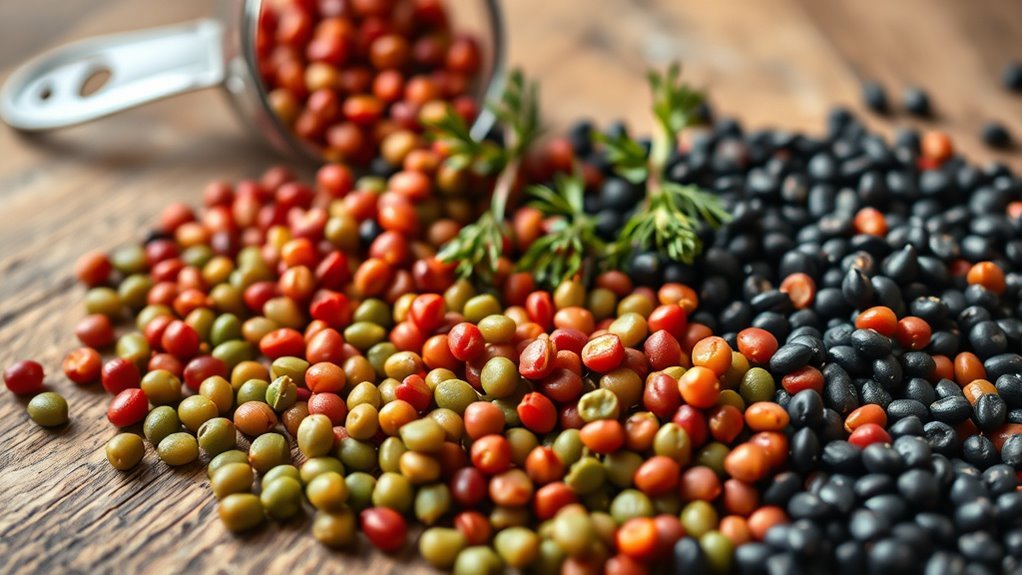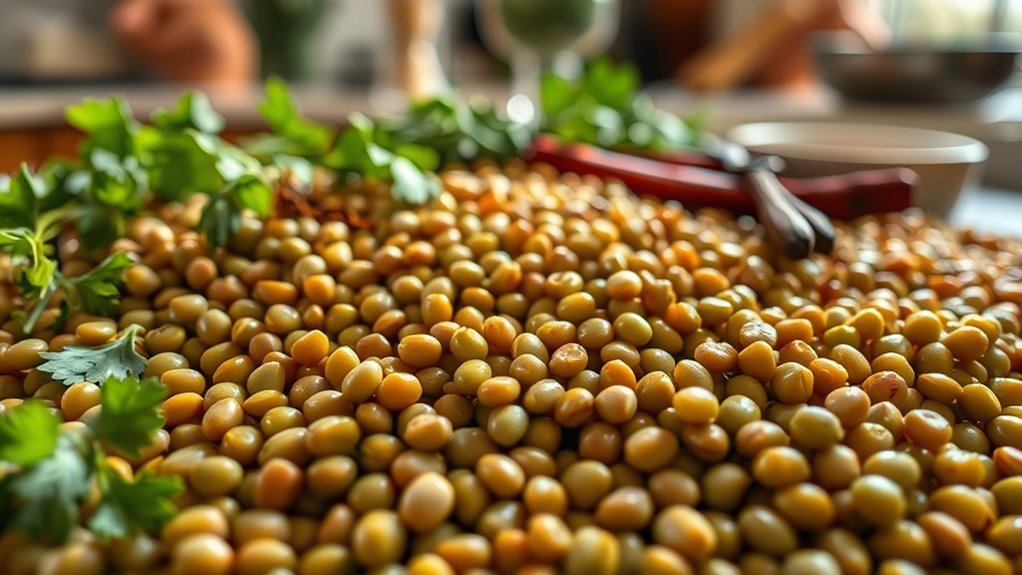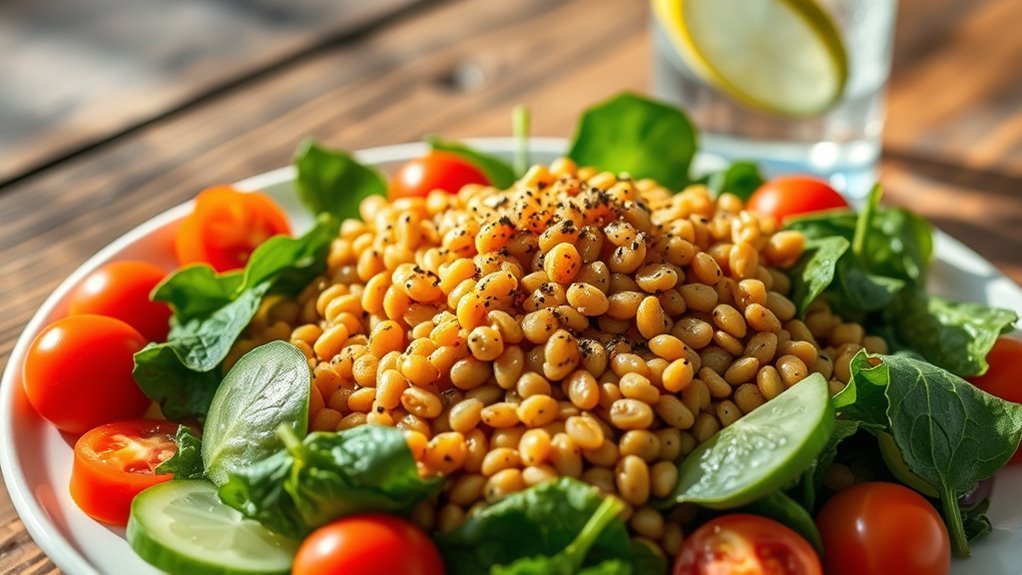Lentils can be tricky on a ketogenic diet due to their carbohydrate content, which averages around 20 grams per cooked cup. While they offer great plant-based protein and fiber, moderation is key. Enjoy small portions—like half a cup of brown lentils for 12 grams of net carbs—paired with low-carb foods to stay in ketosis. If you’re curious about how to balance lentils in your meals, there are more options and tips available for you.
Understanding the Carbohydrate Content of Lentils

When you’re considering a ketogenic diet, it’s essential to understand the carbohydrate content of foods like lentils. Lentils primarily contain complex carbohydrates, which are digested more slowly than simple carbs. This slow digestion can lower the glycemic index, making them a better choice for blood sugar management compared to foods with higher simple carbohydrate content. However, despite their benefits, lentils still have a notable amount of carbohydrates—about 20 grams per cooked cup. If you’re aiming for a strict keto diet, you’ll need to carefully monitor your intake. Balancing your meals with lower-carb foods can help maintain your desired state of ketosis while enjoying the nutritional benefits that lentils offer.
Nutritional Benefits of Lentils

Lentils are packed with essential nutrients that can offer significant health benefits, making them a valuable addition to any diet. They’re an excellent source of plant-based protein, providing about 18 grams per cooked cup, which is vital for muscle repair and overall health. Additionally, their high fiber content—around 15 grams per serving—promotes digestive health, helps regulate blood sugar levels, and keeps you feeling full longer. This nutrient combination can support weight management and heart health. Plus, lentils are rich in vitamins and minerals like iron, folate, and magnesium, which contribute to overall well-being. Including lentils in your meals can enhance your nutritional profile while offering versatility in various dishes, ensuring you enjoy both freedom and nourishment.
How Lentils Fit Into a Ketogenic Diet

While lentils are a powerhouse of nutrition, their place in a ketogenic diet is often debated due to their carbohydrate content. Depending on the lentil varieties, you might find differing levels of carbs. For example, red and yellow lentils tend to have higher carbs compared to green or black lentils. If you’re aiming for strict keto compatibility, it’s essential to monitor your total carb intake. You could potentially incorporate small amounts of lentils into a keto diet by balancing them with other low-carb foods, but keep in mind that moderation is key. Understanding your individual carbohydrate tolerance will help you determine how lentils can fit into your lifestyle while maintaining your keto goals.
Moderation: Enjoying Lentils on Keto
Although incorporating lentils into a ketogenic diet may seem challenging, you can enjoy them in moderation without derailing your goals. By practicing portion control, you can relish in delicious lentil recipes while staying on track. Here’s a quick reference table for portion sizes:
| Lentil Type | Net Carbs per 1/2 Cup |
|---|---|
| Brown Lentils | 12g |
| Green Lentils | 10g |
| Red Lentils | 14g |
| Black Lentils | 11g |
When you choose to include lentils, keep your servings small. A couple of spoonfuls can add flavor without pushing you over your carb limit. Enjoy the variety lentils bring, but remember moderation is key for your keto journey.
Alternatives to Lentils for Keto Dieters
If you’re looking for alternatives to lentils that fit within a ketogenic diet, you’re in luck—there are plenty of options to explore. Cauliflower rice is a fantastic substitute, providing a low-carb base for stir-fries or bowls. It’s rich in vitamins and fiber, making it a nutritious choice. Zucchini noodles, or “zoodles,” are another excellent option; they offer a satisfying texture while keeping your carb count in check. Both alternatives can be easily prepared and flavored to suit your meal preferences. Incorporating these options into your meals allows you to enjoy variety without sacrificing your keto goals. With these substitutes, you can maintain a delicious, balanced diet while embracing the freedom to experiment in the kitchen.


